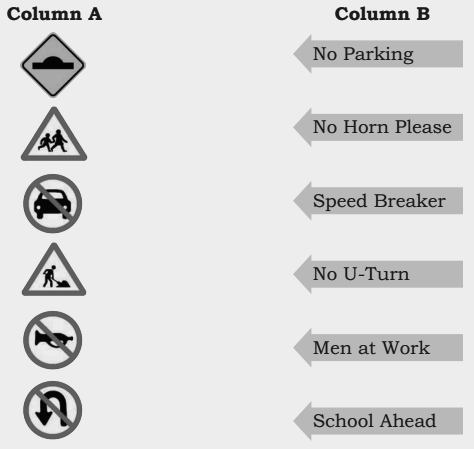Celebrating Festivals Class 3 Questions and Answers - Free PDF Download
FAQs on NCERT Solutions For Class 3 Evs Chapter 3 Celebrating Festivals - 2025-26
1. What is the main concept taught in NCERT Solutions for Class 3 EVS Chapter 3 Celebrating Festivals?
The main concept explained in this chapter is the importance of festivals in Indian culture. It highlights how festivals bring together people from different communities, promote unity, and help students understand diverse customs through stepwise activities and real-life examples, as covered in the official NCERT Solutions for Class 3 EVS Chapter 3.
2. How do NCERT Solutions for Class 3 EVS Chapter 3 help students prepare for CBSE exams?
The solutions provide clear, stepwise answers for every exercise question, following the CBSE 2025–26 pattern. This helps students grasp key festival-related concepts and learn how to write correct answers in exams.
3. What types of festivals are discussed in Class 3 EVS Chapter 3 Celebrating Festivals?
The chapter discusses religious, national, and seasonal festivals, such as Diwali, Eid, Christmas, Independence Day, and local harvest celebrations. Each festival is explained with its traditional foods, dresses, and customs, as per the NCERT Solutions for Class 3 EVS Chapter 3.
4. Why do people wear special clothes and prepare unique foods during festivals?
Wearing special clothes and preparing traditional foods symbolize joy and respect for cultural rituals. This helps express belonging, honor traditions, and share happiness with others, which is a key focus in the answers of Chapter 3 Celebrating Festivals NCERT Solutions for Class 3 EVS.
5. How do the solutions explain the concept of unity during Indian festivals?
NCERT Solutions for Class 3 EVS Chapter 3 highlight unity by showing how people of all backgrounds celebrate festivals together, share meals, and participate in community activities, thus supporting social harmony as per CBSE guidelines.
6. What safety measures are recommended while traveling to festivals, as per Class 3 EVS NCERT Solutions?
- Always wear seatbelts in vehicles
- Stay seated and do not distract the driver
- Use zebra crossings for roads
- Be alert and follow all traffic rules
- Travel with a responsible adult
7. How can festivals promote respect for cultural diversity, according to NCERT Solutions for Class 3 EVS Chapter 3?
By learning about and celebrating various festivals, students understand and appreciate different beliefs and practices, which encourages a respectful and inclusive attitude as per the Class 3 CBSE curriculum.
8. What values do students build through the activities in NCERT Solutions for Class 3 EVS Chapter 3 Celebrating Festivals?
- Unity and togetherness
- Respect for traditions
- Sharing and cooperation
- Joy in diversity
9. What are the special foods associated with different seasons as covered in Chapter 3 NCERT Solutions?
- Spring: Gujiya, Thandai (Holi)
- Summer: Kheer, Ladoo (Raksha Bandhan)
- Monsoon: Modak, Chivda (Ganesh Chaturthi)
- Winter: Makki di Roti, Sarson da Saag (Lohri)
10. How do NCERT Solutions for Class 3 EVS Chapter 3 encourage students to express their own festival experiences?
The solutions include activities such as sharing personal festival stories, drawing decorations, and listing favorite festival foods. This interactive approach helps children relate classroom learning to their daily life, a core feature of Class 3 EVS education.
11. What ‘what-if’ scenario is addressed regarding celebrating festivals differently?
If a family cannot celebrate with new clothes or lavish food, the NCERT Solutions explain that the spirit of festivals—joy, unity, and gratitude—can be experienced by spending time together and respecting family traditions, as per CBSE guidance for inclusivity in Class 3 EVS.
12. How do parents and teachers use NCERT Solutions for Class 3 EVS Chapter 3 to help children?
Parents and teachers use the stepwise solutions to explain chapter topics, assist with homework, encourage discussions about different festivals, and build children’s confidence in answering CBSE-style questions for exams.
13. What are some common misconceptions about festivals addressed in NCERT Solutions for Class 3 EVS Chapter 3?
- Misconception: Only one way to celebrate a festival.
Fact: Each family and region may celebrate differently, and all traditions are valued. - Misconception: Festivals require expensive clothes or foods.
Fact: The essence of festivals is in sharing and unity, not material things.
14. What is the official name of the Class 3 EVS book as per NCERT Solutions?
The official NCERT EVS textbook for Class 3 is called 'Looking Around.' All solutions are based on the exercises from this book as prescribed for CBSE Class 3 2025–26 syllabus.
15. How are drawing and labeling activities included in NCERT Solutions for Class 3 EVS Chapter 3?
Students are instructed to draw and label road signboards or festival scenes as part of hands-on activities. This promotes creativity and better understanding of important signs and symbols discussed in the chapter solutions.































